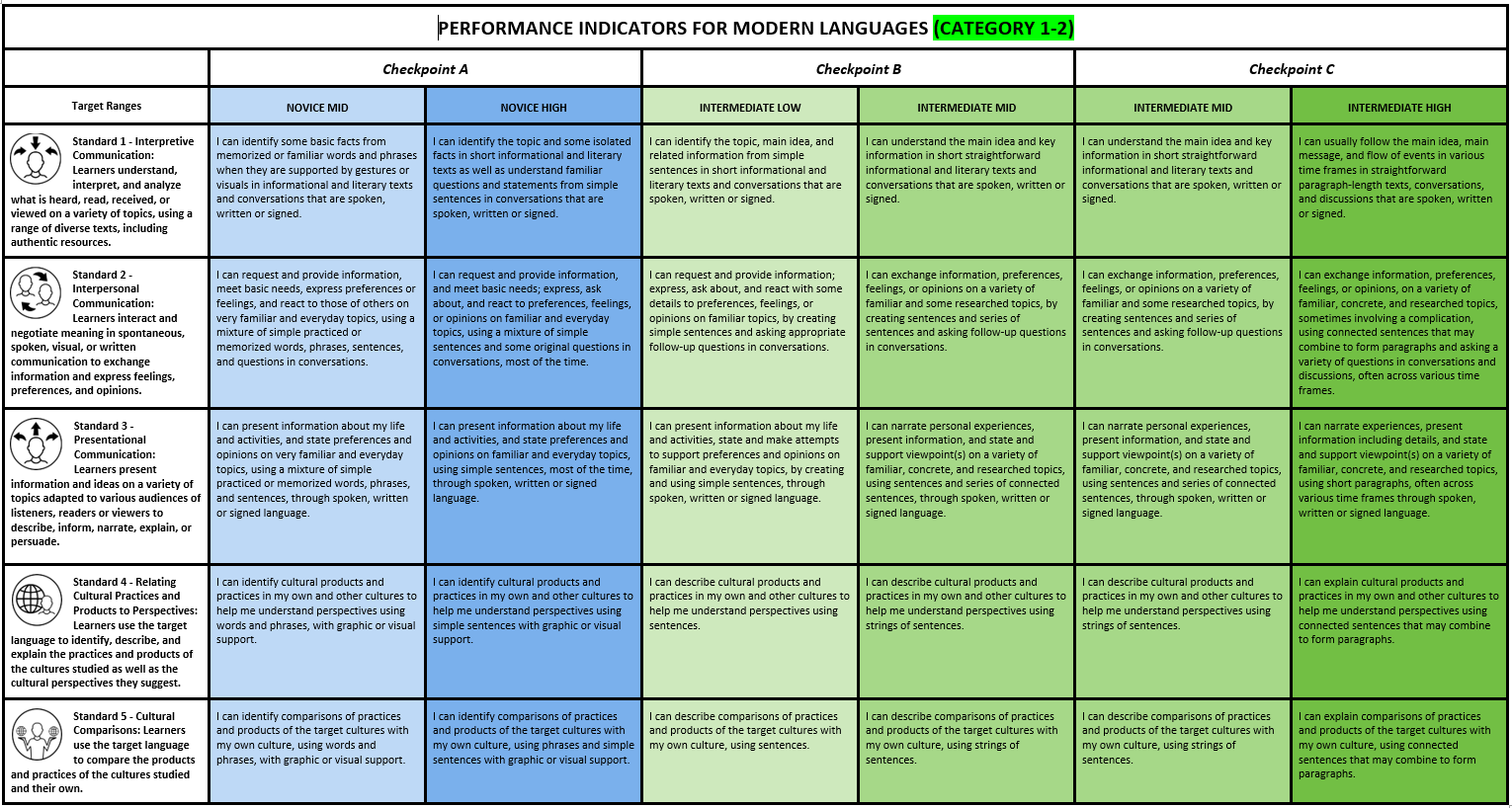Proficiency Targets and Performance Indicators
Performance indicators for modern languages are identified for each Standard at each checkpoint and aligned with the target proficiency level of that checkpoint. The NYS World Language Performance Indicators, are adapted from the 2017 NCSSFL-ACTFL Can-Do Statements, the result of collaboration between the National Council of State Supervisors for Languages (NCSSFL) and the American Council on the Teaching of Foreign Languages (ACTFL) and aligned to ACTFL proficiency sublevels as indicated in the chart above. More specifically, the performance indicators are aligned with the proficiency target range identified for each checkpoint, so all learners are appropriately challenged. These performance indicators are written as Can-Do Statements that are aligned with the target range identified for each checkpoint so that all learners are appropriately challenged. However, it should also be noted that the developmental and spiraled nature of the performance indicators, consistent with ACTFL's Inverted Pyramid model of proficiency, makes differentiation manageable. This can be achieved through the use of proficiency-oriented analytic rubrics that contain qualitative and constructive feedback to accommodate a range of performance levels.
These performance indicators are written as instructional targets in order to accommodate the range of abilities represented in classes of learners at each checkpoint. They target the upper level of the range of proficiency that point to success at the end of each checkpoint. In planning instruction, teachers can differentiate both instructional tasks and evaluation criteria to accommodate the range of abilities and achievement in any given group of learners. Successful growth is represented within a range of proficiency levels for each checkpoint. The goal is that all learners make continuous progress through each checkpoint and experience success that is only made possible in an extended sequence of learning opportunities.
Teachers can create unit and lesson learning targets aligned with these performance indicators using the same language functions to describe student performance. Unit and lesson learning targets can then be written in language that is easily understood by learners. While the learning targets written for students may sometimes look similar among checkpoints, the proficiency level expectation becomes progressively more challenging in terms of expected level of control of discourse type, function, context and accuracy. These expectations are best explained using well-crafted analytic rubrics to provide feedback on performance and proficiency assessment tasks.
While proficiency targets describe the four elements of language functions, context, text type, and accuracy, these performance indicators address only the first three. The performance descriptions for each proficiency target include the relevant language functions, context and text type. The fourth element of proficiency, accuracy, is not addressed in the performance indicators. In proficiency-focused instruction, accuracy is a function of the comprehensibility of the learner. The principal consideration in determining comprehensibility is dependent on the experience of the receiver of the communication in dealing with non-native speakers of the language. A screen shot of the one pager Performance Indicator document for category 1-2 modern languages is below.
Performance indicator documents are available for all three language categories (category 1-2, category 3-4, and classical languages) and in multiple formats (one pager vs. elaborated document, Word document and PDF). To download one of these documents, click on the version of the performance indicators from the grid below.
| One Pager (tabloid) | Document (letter) | Document (tabloid) | |
| Modern languages (Category 1-2) | Word, PDF | Word, PDF | Word, PDF |
| Modern languages (Category 3-4) | Word, PDF | Word, PDF | Word, PDF |
| Classical languages | Word, PDF | Word, PDF | Word, PDF |
Webpage last updated on July 29, 2025






